Initially until carried away the dream and still be a fantasy can see the process of making legendary Batik. It's been so long I dreamed I could see the beautiful Batik making, finally this year I can realize my dream. All this can be realized because one of my acquaintances who do live on the island of Java contact me to come to his place of residence.
We also made an appointment to determine the date for me to come to my acquaintance, knowing that even though one country the distance I live is different island, I live in Sumatra island while my acquaintance is domiciled in the island of Java. After determining the right time I went to Java island to realize my dream that I have long dreamed, I am very happy because it can see directly the process of making Batik.
So let's stay with me the road way on the island of Java Indonesia to see first hand the process of making the legendary Batik to foreign countries.
Batik, process and technique make it
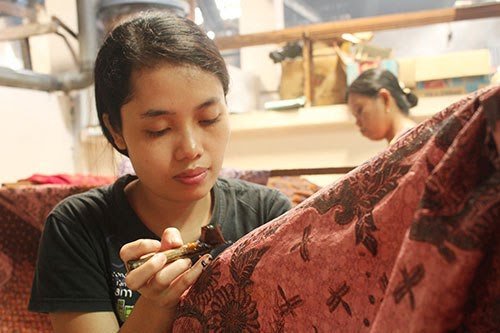
Making Batik is one of the techniques that made batik manually. This technique is among the oldest when compared with other Batik techniques. Process work will usually take a long time, because all done with hands that need caution, thoroughness, patience and perseverance.
Handmade Batik became one of the handicraft that is quite enthused by the executives. This type of Batik on the market can be considered the most expensive when compared with other types of Batik, especially the pengerjaanya only use the technique of stamp or printing. Until now the most expensive type of Batik is handmade Batik that uses silk fabric using natural dyes.
The process of making handmade Batik
To make handmade Batik, some of the tools used are various canting Batik, Batik candle, oil stove, wok, gawangan and others. While the material used can use mori cloth or silk fabric. The sequence of the process of making handmade Batik is as follows:
Drawing Batik Patterns
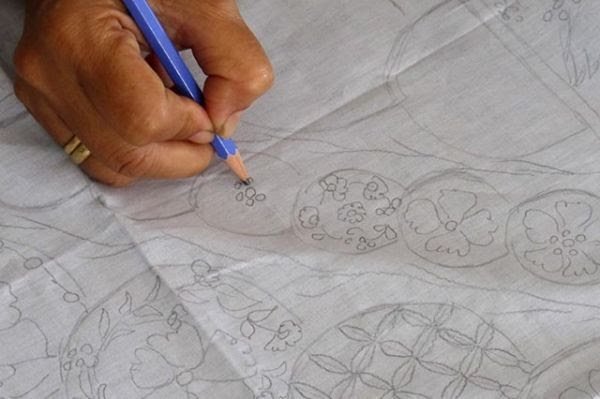
The process of handmade Batik work started from "Nyoret", which is drawing pattern of Batik motif on mori cloth by using pencil. The process of drawing patterns Batik motif is practically a job that requires good skills. The person who draws should really understand about the various patterns of Batik motif, able to create good composition and motive anatomy, and can estimate the results of batik fabric made.
For beginners, to be able to produce images pattern Batik motifs on good fabric, usually pattern Batik motif is designed first on paper. It aims to minimize errors when drawing on a cloth.
Painting Batik Patterns Using Candles
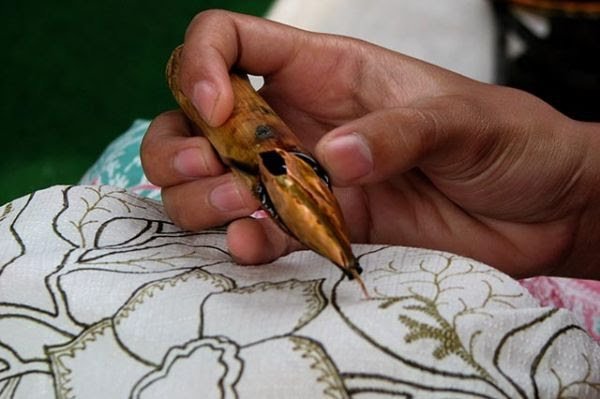
After the cloth mori pattern drawn motif Batik using pencil, the next process is painted cloth using klowong night with canting tool. This heated candle is inscribed on the cloth by following the pattern already made. The basic process of painting patterns with tonight is also commonly referred to as "Ngrengrengi" because it uses canting Rengrengan, or also called "Nglowongi" because it uses candles.
The process of "Nglowongi" is to form the outline of Batik motif. The outline of the covered candle will not be touched by the color when the fabric is stained. If the wax is exfoliated it will produce the white color of the fabric, while the cloth is not exposed to the candle will bring the appropriate color as desired.
Coloring Process Batik Cloth
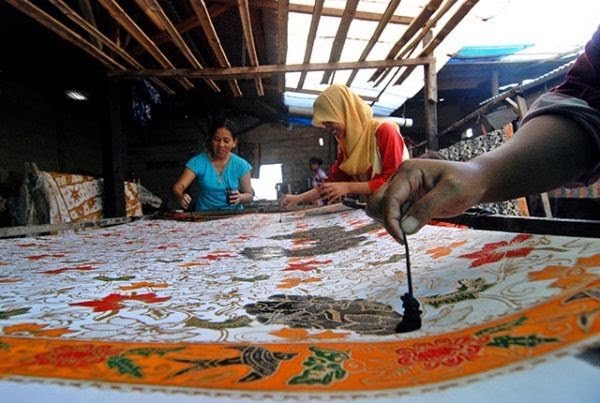
Batik fabric that has been drawn using candles, the next process is coloring the Batik cloth. The dyeing technique can be dyed (soga technique). If using dye then all the fabrics will be immersed in large containers that have been dyeed. If using the technique dab Batik cloth in the spread horizontally then dyed dye by using brush or other tools.
Coloring Batik cloth with a lot of dab techniques done by the craftsmen Batik if Batik cloth is designed to have many colors. By applying coloring to the areas of motif Batik, craftsmen no longer need to give a candle on Batik cloth after the color. The fabric is given a color amplifier, then the wax can be immediately removed from the cloth.
The advantage of using dye is the color that will appear on Batik cloth can be more evenly and more easily. While the weakness of using the dye technique is when will require another color then it takes the process of adding cloth with wax.
In dyeing Batik handmade fabric with dyeing technique, the fabric can start from the youngest color. This is so that when needing a darker color on batik cloth is easy to do. If from the beginning coloring Batik using dark color, then when needing light color will be very difficult.
Process Removing Candles on Batik
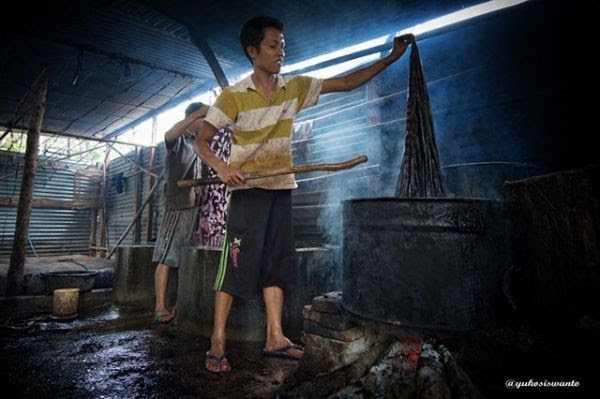
After the coloring process has been done and has been given a color amplifier, the next process is to remove the wax on Batik cloth. This process serves to remove the wax on Batik attached to the fabric. The way to release it is to cook water until boiling then the cloth is put in the water. The working system in this process is; the wax attached to the fabric is not resistant to heat, so if it gets hot it will melt and get out of the batik cloth.
The process of making Batik handmade is more complicated, both when drawing with candles and when coloring. Nevertheless Batik handmade have high artistic value and price will usually be more expensive.
Batik making is a lot of way, besides using the technique Handmade Batik also there are other techniques that make Batik with stamp technique, dye binding techniques and Batik printing techniques.
This is my experience to see the process of making Batik handmade very extraordinary.
Source: https://kesolo.com/batik-tulis-proses-dan-teknik-membuatnya/amp/
Not indicating that the content you copy/paste is not your original work could be seen as plagiarism.
Some tips to share content and add value:
Repeated plagiarized posts are considered spam. Spam is discouraged by the community, and may result in action from the cheetah bot.
Creative Commons: If you are posting content under a Creative Commons license, please attribute and link according to the specific license. If you are posting content under CC0 or Public Domain please consider noting that at the end of your post.
If you are actually the original author, please do reply to let us know!
Thank You!